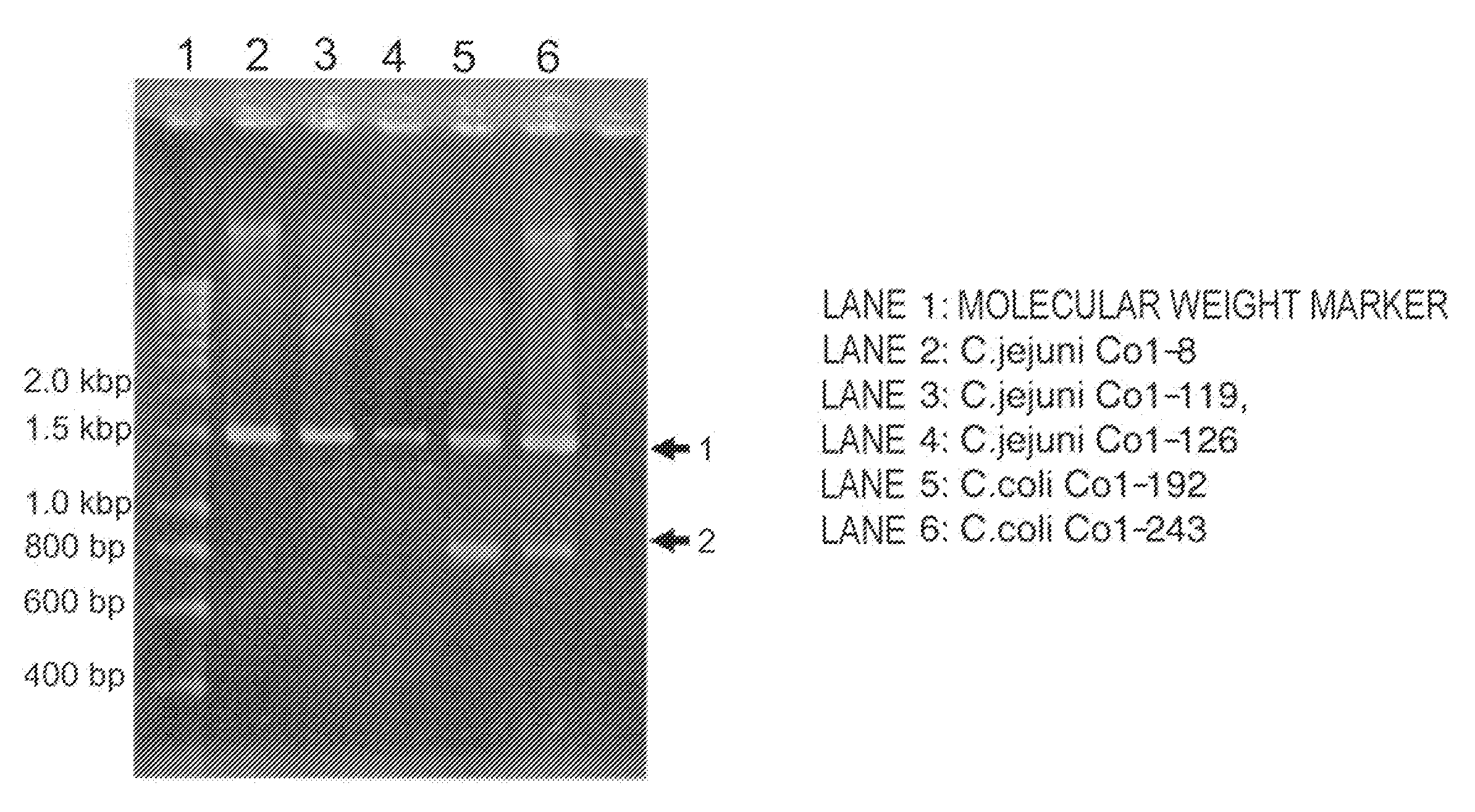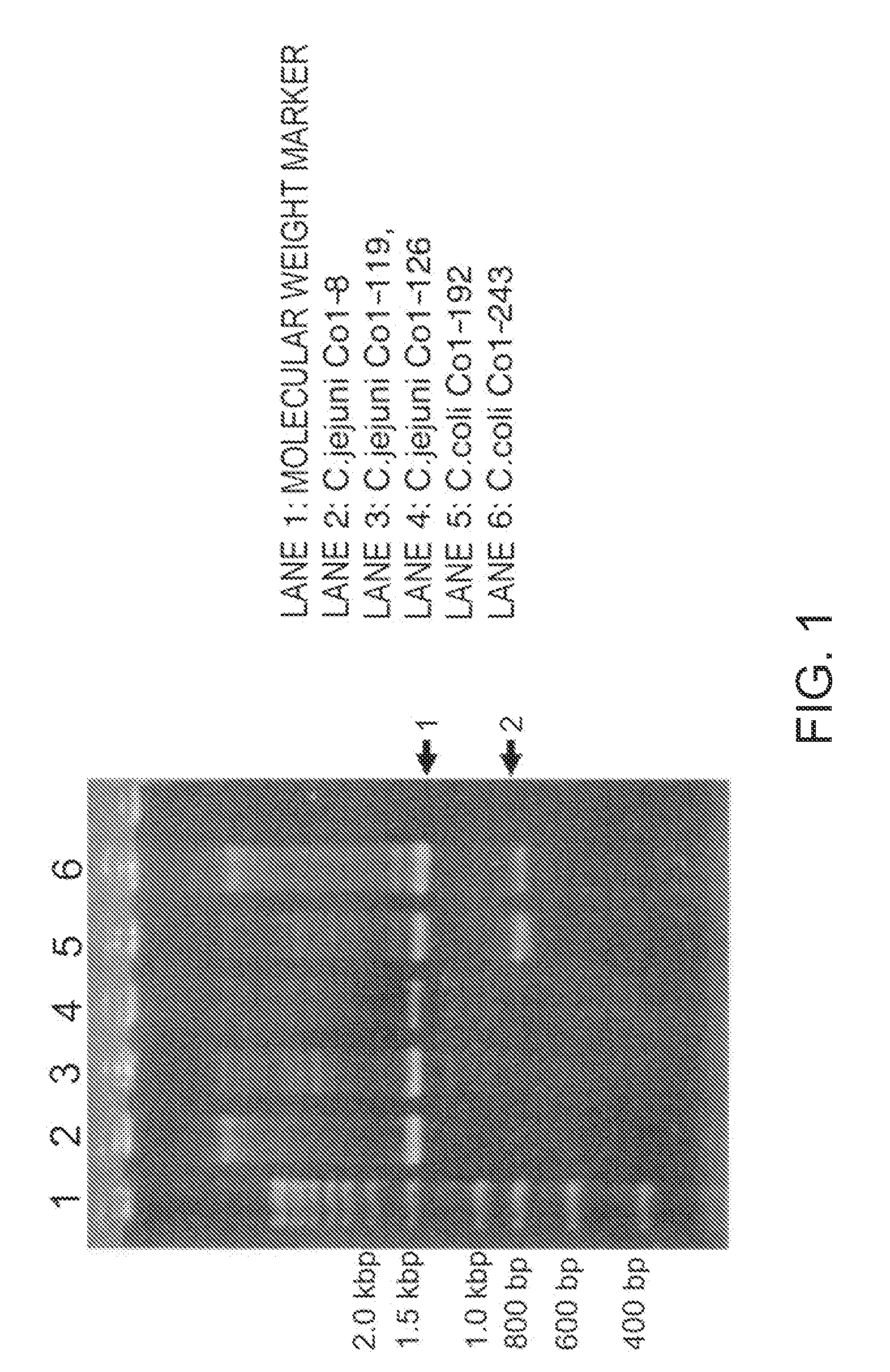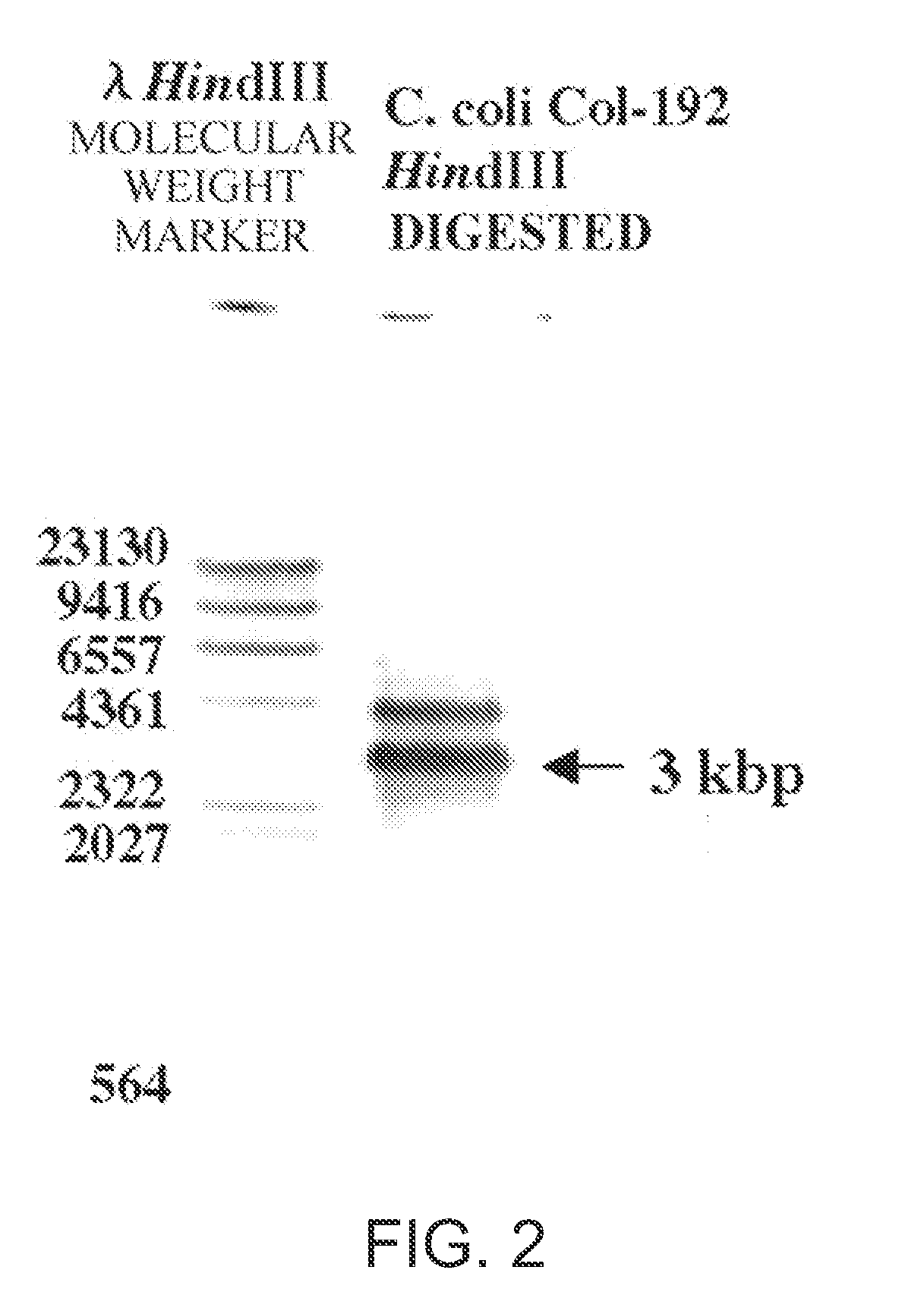Cytolethal distending toxins and detection of campylobacter bacteria using the same as a target
a technology target, which is applied in the field of cytolethal distending toxins of campylobacter bacteria and polynucleotides encoding, can solve the problems of inability to rapidly detect i>campylobacter /i>bacteria, common restriction enzymes such as ecori, psti, kpni, etc., and achieve fragments with an adequate length (3
- Summary
- Abstract
- Description
- Claims
- Application Information
AI Technical Summary
Benefits of technology
Problems solved by technology
Method used
Image
Examples
example 1
Campylobacter Strains
[0134]C. jejuni, C. coli, and C. fetus collected from various clinical materials during 2001 to 2003 were used. Each strain was cultured in blood agar plates (Blood Agar Base No. 2: OXOID) containing 5% defibrinated horse blood (Japan Biological Material Center) and Campylobacter Selective Supplement SR69 (OXOID). C. jejuni and C. coli were cultured under 5% O2, 10% CO2, and 85% N2 gases at 42° C., while C. fetus was cultured at 25° C. in a low-temperature O2 / CO2 gas incubator (MODEL9200: Wakenyaku Co., Ltd).
example 2
Preparation of PCR Template
[0135]Five clones of each bacterial species were scraped off and suspended in 500 μl of sterile PBS. The harvested bacteria were washed by centrifugation at 10,000 rpm for min (MRX-150: TOMY SEIKO Co., Ltd.), and then resuspended in 300 μl of sterile PBS. Then, the suspensions were boiled in boiling water bath for 10 minutes, and cooled on ice. The suspensions were centrifuged at 15,000 rpm for 10 min and the resulting supernatants were collected. The amount of DNA in the collected supernatants were quantified using a spectrophotometer (Ultrospec 3100pro: Amersham Biosciences). Each quantified cell extract was diluted to 20 ng / μl and subjected to PCR.
example 3
Preparation of C. Coli cdtB Probe and Southern Hybridization
[0136]A C. coli cdtB probe was prepared by PCR labeling using the primers GNW and LPF-D, DIG Labeling Mix (Roche), and cell extract of C. coli Co1-192 as a template.
[0137]Specifically, to test the existence of the C. coli CDT gene, three C. jejuni strains and two C. coli strains were analyzed by PCR using the degenerate primers GNW
[SEQ ID NO: 5: 5′-GG(ACGT)AA(CT)TGGAT(ACT)TGGGG(ACGT)TA-3′]andLPF-D [SEQ ID NO: 6: 5′-(AGT)AA(CT)TG(ACGT)AC(AGT)TA(ACGT)CC(AGT)AA (ACGT)GG-3′]
described in a reference (Pickett, C. et al. Infect. Immun., 64: 2070 (1996)) under the condition of: 94° C. for 3 minutes, 30 cycles of [94° C. for 30 seconds, 42° C. for 30 seconds, and 72° C. for 2 minutes], and 72° C. for 5 minutes. All three C. jejuni strains and two C. coli strains gave bands of the amplified cdt region at about 1.5 Kb (arrow 1 in FIG. 1).
[0138]The amplified bands were ligated into pT7 vector (Novagen), and E. coli (E. coli JM109) cell...
PUM
 Login to View More
Login to View More Abstract
Description
Claims
Application Information
 Login to View More
Login to View More - R&D
- Intellectual Property
- Life Sciences
- Materials
- Tech Scout
- Unparalleled Data Quality
- Higher Quality Content
- 60% Fewer Hallucinations
Browse by: Latest US Patents, China's latest patents, Technical Efficacy Thesaurus, Application Domain, Technology Topic, Popular Technical Reports.
© 2025 PatSnap. All rights reserved.Legal|Privacy policy|Modern Slavery Act Transparency Statement|Sitemap|About US| Contact US: help@patsnap.com



